These components are required
Resistors 10 Ω from the AZ Resistor Kit
The idea of this project
Every electronics engineer has probably been faced with the question of whether a battery is still good enough for a particular task. Unfortunately, you can't tell by looking at it whether it is still fresh and has full capacity or whether it is already largely used up.
What you can see are traces of leaking liquid, which usually emerge from the bottom of the battery, or deposits of oxide or rust. In both cases, the battery is probably unusable.
So what do you do to get clarity? You measure the voltage emitted by a battery and get a reading of 1.4 V, for example. Is this a good sign? Can this battery still be put to good use?
In fact, this measurement does not provide any useful information about the battery condition. It is better to connect a light bulb to the battery. The light intensity provides a rough impression.
Here I present a simple measuring method in which we use the TDMM to determine the internal resistance of a voltage source, e.g. of "dry batteries" type AA or AAA.
The internal resistance of a voltage source cannot be determined with an ohmmeter - please don't even try it out, it could get you into trouble. We want to find out what is meant by "internal resistance" and how we can measure it.
What is meant by the "internal resistance" of a voltage source?
There is useful information on this on the Internet, e.g. in Wikipedia. Let's take a closer look at the task:

Figure 1: Internal resistance of a voltage source
The battery is shown in the part of the circuit diagram outlined in red. It consists of a ideal voltage source and a resistor connected in series. An ideal voltage source always delivers the same voltage and supplies unlimited current. Its internal resistance is therefore 0 Ω. Such an ideal source only exists in theory. To represent a battery, we choose the ideal voltage source whose current is divided by the internal resistance Ri is limited. This leads to the real battery with finite current and Ri.
Ri depends on several factors: On the state of charge of the battery - i.e. its current "chemical state", which depends on how old the battery is and how much charge has already been removed, and on the battery type. The ambient temperature also plays a major role. The colder the environment, the less power a battery delivers.
Every other voltage source, every battery, every power supply unit and every mains adapter also has an internal resistance. It is always "in the red box", i.e. in the voltage source itself, and is neither accessible nor directly measurable.
Figure 1 shows a voltmeter for measuring voltage on the right-hand side. This measuring device - in our case the TDMM - has a very high internal resistance and therefore measures the voltage of the ideal voltage source at the output terminals without any loss, whereby the (quite low) internal resistance of the battery plays no role at all compared to the (very high) input resistance at the measuring terminals of the TDMM.
This can give the false impression that a battery is fit and healthy, although it is already largely depleted. The voltage of the unloaded battery says (almost) nothing about its condition.
The battery under realistic conditions
Under realistic conditions, a battery supplies e.g. a microprocessor board or one of its circuits with power. We call this circuit a "consumer" because it actually gradually consumes the charge provided by the battery:

Figure 2: Battery with load
This creates a voltage divider between the internal resistance Ri and the load R1. We can measure the voltage at R1 without any problems. We already know the so-called "open-circuit voltage" without a load. By measuring the voltage drop at the terminals of the battery once without load and once with load we determine a voltage difference ∆U between the open-circuit voltage and the voltage with load. We use this to calculate the internal resistance Ri.
There are several other methods of measurement. Our method has the advantage of being simple, less prone to errors and quick to implement. It also allows us to monitor the battery status during operation so that we can replace our battery in good time.
Before we get to the measurements, here is some basic information about dry batteries.
The most important types of dry batteries
Here I will only discuss the most common types of batteries:
Type Designation Voltage Capacity
AA Mignon LR6 1,5 V 1,200 - 3,000 mAh
AAA Micro LR03 1,5 V 500 - 1,100 mAh
AAAA Mini LR61 1,5 V 500 - 600 mAh
N Lady R1 1,5 V 850 mAh
C Baby LR14 1,5 V 8,000 mAh
D Mono LR20 1,5 V 6,000 - 18,000 mAh
Block 6LKR61 9 V 190 - 12,000 mAh (!)
You can see that with batteries identical design have very different capacities. Let's take a look at the AA battery as an example, which is certainly a widely used voltage source. You can buy this battery with a capacity of 1,200 mAh, for example. What does "1,200 mAh" mean?
It means that you can draw 100 mA at 1.5 V from the AA cell (within the specification) for 12 hours, for example. During operation, the voltage gradually decreases.
For a little more money you can also have a battery with 2.5 times the capacity and identical dimensions, e.g. with 3,000 mAh. A special case is the 9 V block, where there are large differences in the possible capacity.
You often do not get any information about the actual capacity of a battery. You will read labels such as "heavy duty" or "super longlife". This is not very specific, but it is an indication of particularly powerful cells. Sometimes this information is wrong. Occasionally you will find good technical information on the manufacturer's website. With no-name batteries, this chance is small.
The internal resistance brings it to light
High-performance batteries have a lower internal resistance than other batteries of the same size. They contain more electrolyte and therefore have a higher capacity. They "wear out" more slowly.
What internal resistance can you expect from a high-performance AA battery, for example? Manufacturers specify 0.15 - 0.3 Ω as the internal resistance when delivering a maximum-capacity AA mignon cell. I have never seen such a value myself. In fact, we can see differences between the discounter product tested here and a branded product.
Can dry batteries be recharged?
Manufacturers warn against recharging batteries. Electronics engineers, physicists and radio amateurs are of the opinion that "recharging alone harms the industry's turnover".
I can confirm the rechargeability of the "alkaline battery" type (Zn/MnO2). In facilities that require a particularly large number of batteries, e.g. hospitals, you will often find chargers for this type of battery. "Charging" is not quite the right term. The chemical processes in the cell are only partially reversed. The battery is refreshednot "charged" like a rechargeable battery.
I myself use a charger for alkaline batteries. In fact, I have noticed that the quality of many batteries is getting worse and worse and that it is becoming increasingly difficult to refresh them. I charge my personal favorites up to 5 times. To do this, I use batteries from a brand that apparently does without the "intentional (?) deterioration" in its rather high-priced products. This saves the environment around 50% of waste and my wallet 30% of avoidable expenditure.
Let's take a look at the differences and how to recognize them.
Structure of the measuring circuit
The aim of this blog post is also to carry out practical measurements with the TDMM and demonstrate its usefulness. This is also the case here. The measuring circuit is very simple:

Figure 3: Measuring circuit
We see the already familiar representation of the battery and the TDMM as a voltmeter. We now take 6 resistors of 10 Ω each from our resistor range. As these resistors have a resistance value accurate to 1% (so-called "measuring resistors"), the measurement error is minimal.
First, we want to briefly check whether the power loss of a resistor of max. 250 mW is maintained during the measurement. It could be that the resistor is "fried" during the test.
At 1.5 V, a current of 0.15 A flows through a resistor of 10 Ω. At a voltage of 1.5 V, 10 Ω convert a power P = U*I ... P= 1.5 * 0.15 of P = 225 mW into heat. Phewhh !!! The reserve is 25 mW. Don't worry: the resistor can withstand a little more. But it heats up more and more, which increases its resistance value. We are on the safe side for our measurement.
150 mA flows per resistor (Kirchhoff's rule - remember that?). This makes our measurement uncomplicated. We want to load the test battery with a maximum of 900 mA. If you want, you can connect up to 10 resistors in parallel and generate a load of 1.5 A. We have limited ourselves to six resistors for the following measurements. I'll show you why later.
This is how the measurements work
As soon as you have set up the measuring circuit, we can get started. First measure the open-circuit voltage of the battery, i.e. without a load, and note it down.
Then we connect the first 10 Ω load resistor and measure the battery voltage again. It is now slightly lower than before. However, it should remain stable, even if you measure for 10 ... 20 s of measurement. If the voltage drops during this time, this indicates a weak battery, because its internal resistance increases even with a short-term load. This should not yet be the case with a measuring current of 150 mA - which we have with a load of 10 Ω.
We prepare the 2nd load measurement in such a way that we measure the battery voltage measure the battery voltage again at no load. It is quite possible that it is now a little lower than before. If not, this is a good sign. So that we can calculate correctly later, we need this no-load voltage before we carry out the 2nd load measurement. This also applies to every further measurement.
Now connect the second 10 Ω resistor in parallel with the first resistor and measure the voltage. It is sufficient to let the measurement run until the display on the TDMM is stable. The TDMM always takes 10 measurements internally and provides the average value. You will get a reliable result if you make sure that all contacts are clean.
Now continue the measurement procedure with as many resistors connected in parallel as you like. In my example, I have set a maximum load of 900 mA as the limit for an AA cell. That is quite a lot. If you draw too much current, the cell may "crack". The internal resistance rises sharply, the cell becomes hot and may be irreparably damaged.
So please do not overdo it.
To simplify your measurements, I have created a table for the simple recording of measured values and calculation of the internal resistance. It is available in .xlsx format and can be opened by most popular spreadsheet programs. Here are my measurements as an example:
-
Battery from a brand manufacturer; 12 months old
AA cell branded product stored for 12 months Number of resistors
parallelR total
[Ω]Base
value [Ω]Current at 1.5V
[mA]Ubatt
[V]
without loadUbatt
[V]
with loadInternal resistance
[Ω]1 10,00 10 150 1,54 1,4 1,00 2 5,00 300 1,54 1,3 0,92 3 3,33 450 1,54 1,22 0,87 4 2,50 600 1,54 1,16 0,82 5 2,00 750 1,54 1,08 0,85 6 1,67 900 1,54 1 0,90 7 1,43 1050 8 1,25 1200 9 1,11 1350 10 1,00 1500
Table 1: AA_brand_battery_after_12_months -
Battery from a brand manufacturer; recharged several times
AA cell branded product after multiple recharging Number of resistors
parallelR total
[Ω]Base
value [Ω]Current at 1.5V
[mA]Ubatt
[V]
without loadUbatt
[V]
with loadInternal resistance
[Ω]1 10,00 10 150 1,66 1,38 2,03 2 5,00 300 1,55 1,17 1,62 3 3,33 450 1,55 1,01 1,78 4 2,50 600 1,53 0,96 1,48 5 2,00 750 1,49 0,78 1,82 6 1,67 900 1,48 0,72 1,76 7 1,43 1050 8 1,25 1200 9 1,11 1350 10 1,00 1500
Table 2: AA_brand_product_multiple_charged -
Battery from discount store; freshly purchased
AA cell freshly purchased from a discount store Number of resistors
parallelR total
[Ω]Basic
value [Ω]Current at 1.5V
[mA]Ubatt
[V]
without loadUbatt
[V]
with loadInternal resistance
[Ω]1 10,00 10 150 1,45 1,29 1,24 2 5,00 300 1,45 1,17 1,20 3 3,33 450 1,44 1,1 1,03 4 2,50 600 1,44 1,01 1,06 5 2,00 750 1,43 0,95 1,01 6 1,67 900 1,43 0,86 1,10 7 1,43 1050 8 1,25 1200 9 1,11 1350 10 1,00 1500
Table 3: AA_cell_fresh_from_the_discounter
Regarding 1), it is noticeable that the battery stored for 12 months has an internal resistance of around 0.9 Ω. The internal resistance is still stable even under high load (1.67 Ω with 6 resistors connected in parallel). The internal resistance of 0.35 Ω specified by the manufacturer is not achieved.
In 2) we consider a battery of exactly the same design and age. However, this battery has been used intensively and refreshed 2 - 3 times. The resistance is around 1.8 Ω on average. It has roughly doubled compared to the battery that was only stored and otherwise fresh. The high open-circuit voltage of 1.66 V before the first measurement is striking. This is typical for refreshed batteries. The open-circuit voltage is quite high at the beginning. After the first load, it drops sharply.
The limits of refreshing can be clearly seen at loads > 150 mA. The available voltage drops steadily and finally amounts to only 0.72 V.
Refreshed batteries are best used where low operating currents are sufficient. The fresh battery should therefore first be used in the power-hungry device, then refreshed and used where less power is required. There it can be used over a longer period of time and can be refreshed several times.
In 3) we see a brand new battery, albeit from a discount store and almost certainly a Far East product that is sold in large packs for little money. Although brand new, we get an open circuit voltage of only 1.45 V. This is ok for a 1.5 V battery. But even with a load of 150 mA, it is just 1.29 V. And that is no longer ok.
This as-new battery shows values like our branded battery after the first refreshment.
Critical examination of our measurements
When you look at the tables, some questions arise. We are operating here with small resistances, down to 1 Ω. If the measurement circuit is set up on a breadboard, the unavoidable transition resistances within the board and the resistances of the connectors are also included in the measurement. With a simple test setup like this, the measurements cannot be super accurate. This is why we have some uncertainties and sometimes fluctuations in the calculated internal resistance. The measurement accuracy of the TDMM, on the other hand, hardly contributes to the measurement error.
There are also questions about the measurement method itself. In our example, the voltage source is only loaded with resistors. The load is constant. However, more complex measurement methods with a DC/AC mixture can be found in the literature. The load is no longer constant, but an alternating load is superimposed. The reason given is that this is the only way to correctly assess the condition of the cell. Unfortunately, it does not go any deeper. It does not go into why this should be the case. When chemistry is involved, electronics engineers sometimes find it a little difficult ...
Measuring the internal resistance of other voltage sources?
The measurement method presented here is basically suitable for determining the internal resistance of any voltage source. This could be a power supply unit, a battery ... whatever. Of course, the dimensions of the measuring circuit must then be adapted accordingly.
Professional measuring devices usually work with the method shown here.
Calculation of the internal resistance
Just for the sake of completeness, a brief explanation of how the internal resistance is calculated in the table.
We refer once again to Figure 3.
Uo: Open-circuit voltage without load [V] (voltage of the "ideal voltage source")
U: Voltage at the respective load current [V] (terminal voltage of the battery)
R: Load resistor R in [Ω] (composed of R1 ... R6, 10 Ω each; 1 - 6 of which connected in parallel)
The voltage at the internal resistor Ri of the battery is (Uo - U). It is called ∆U ("voltage drop").
The current through the entire arrangement can be calculated from the measured voltage at the load resistor R and its resistance value:
I = U/R
Note: In the table I give a theoretical load current at 1.5V. This only serves as an orientation as to how heavily the cell is loaded. Logical: If the cell voltage has dropped to 1 volt due to a load, for example, only 100 mA will flow through a 10 Ω resistor, not 150 mA!
As we now know the current through the entire circuit including the internal resistance of the cell, we can directly calculate the internal resistance Ri directly from the voltage drop:
Ri = ∆U/U * R [Ω]
This is exactly how the formula is implemented in the tables.
And now have fun measuring - and always remember: "If you measure, you measure crap".
Best regards
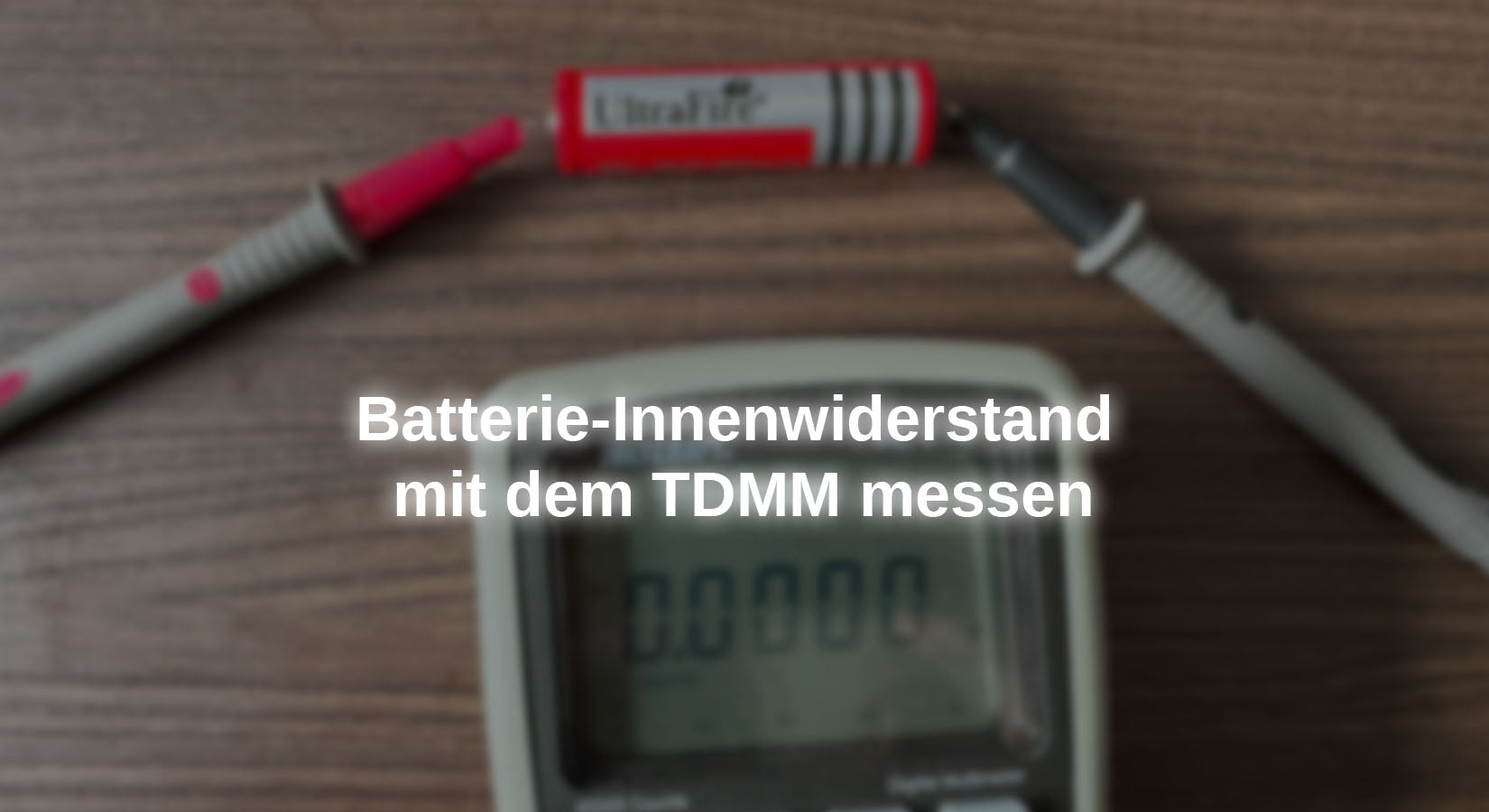




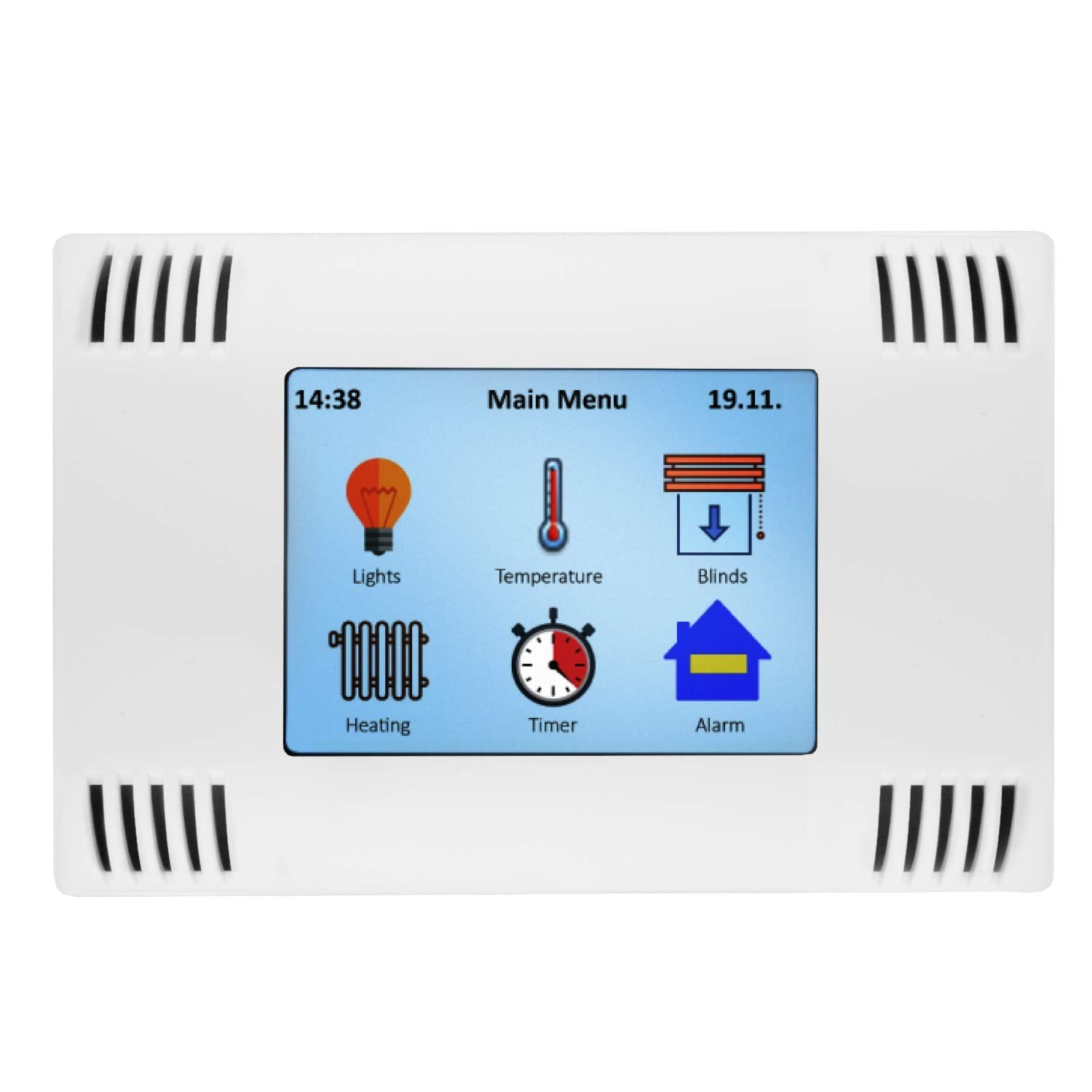
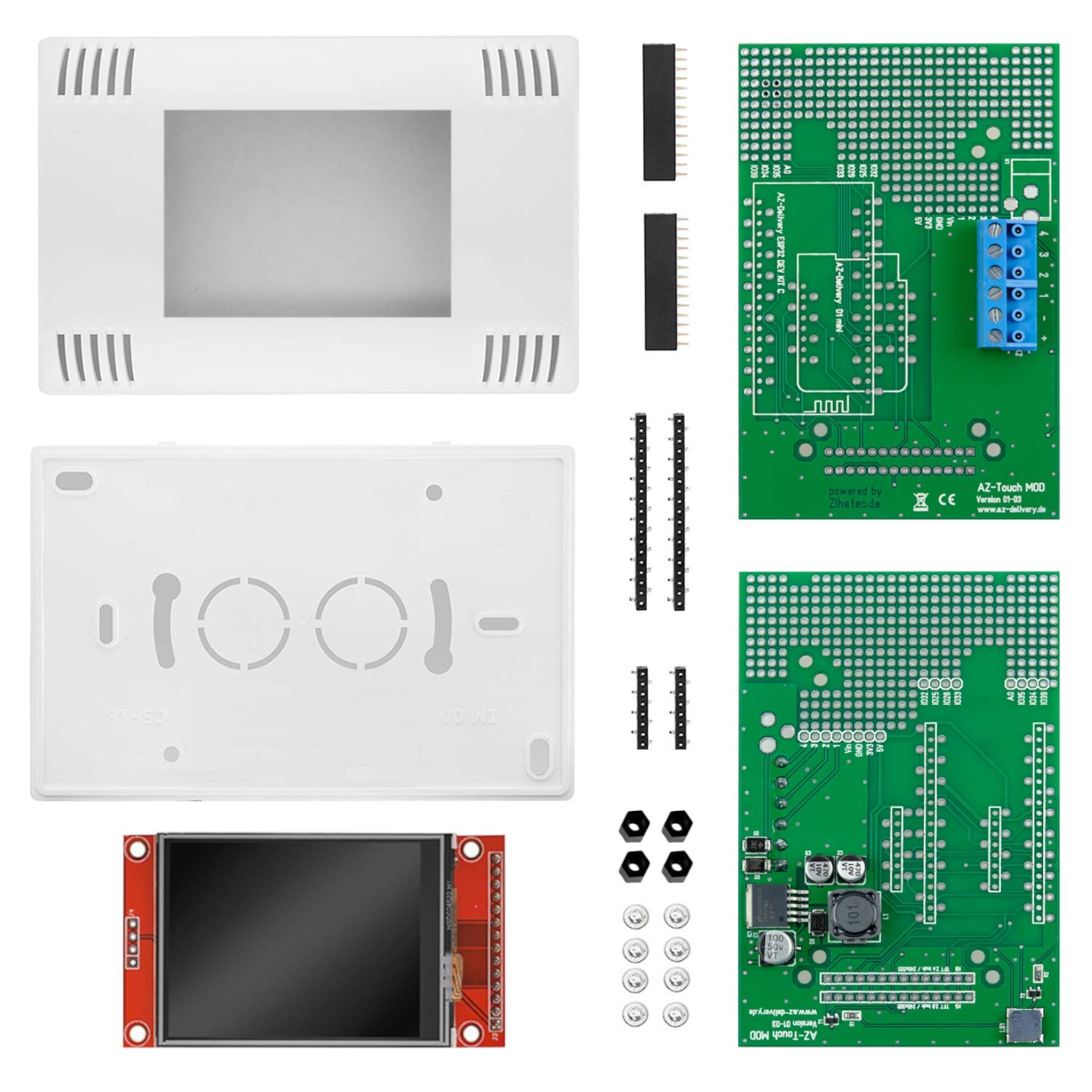
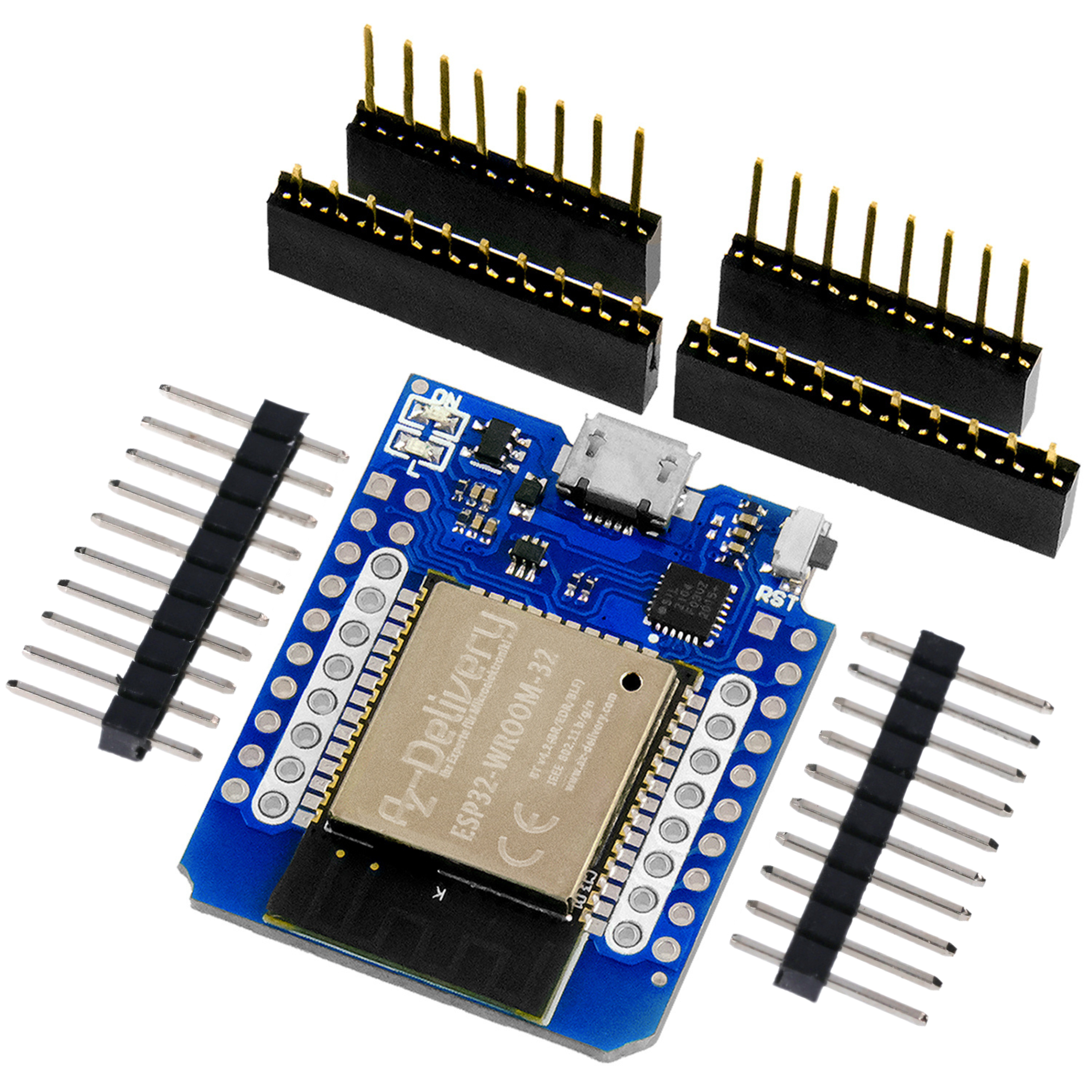
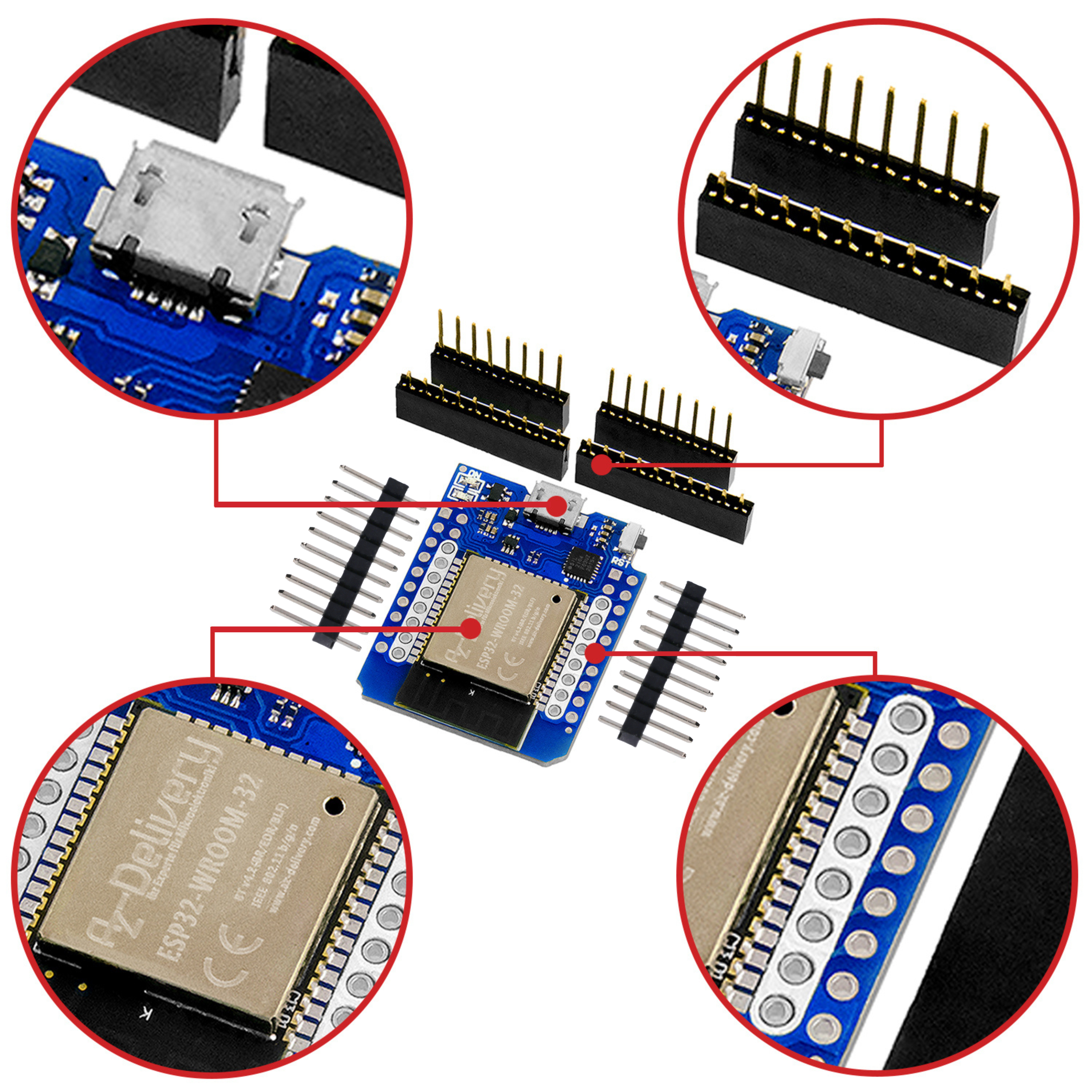


2 comments
Anstela
Hallo,
Vielen Dank für Ihren Hinweis. Die Tabellen 1 bis 3 sind nun sichtbar. Wir bitten die Unannehmlichkeiten zu entschuldigen.
Mit freundlichen Grüßen
Anstela vom AZ-Delivery
Michael
Interessanter Artikel. Ich kann allerdings die zitierten Tabellen 1 bis 3 nicht finden. Übersehe ich da etwas?